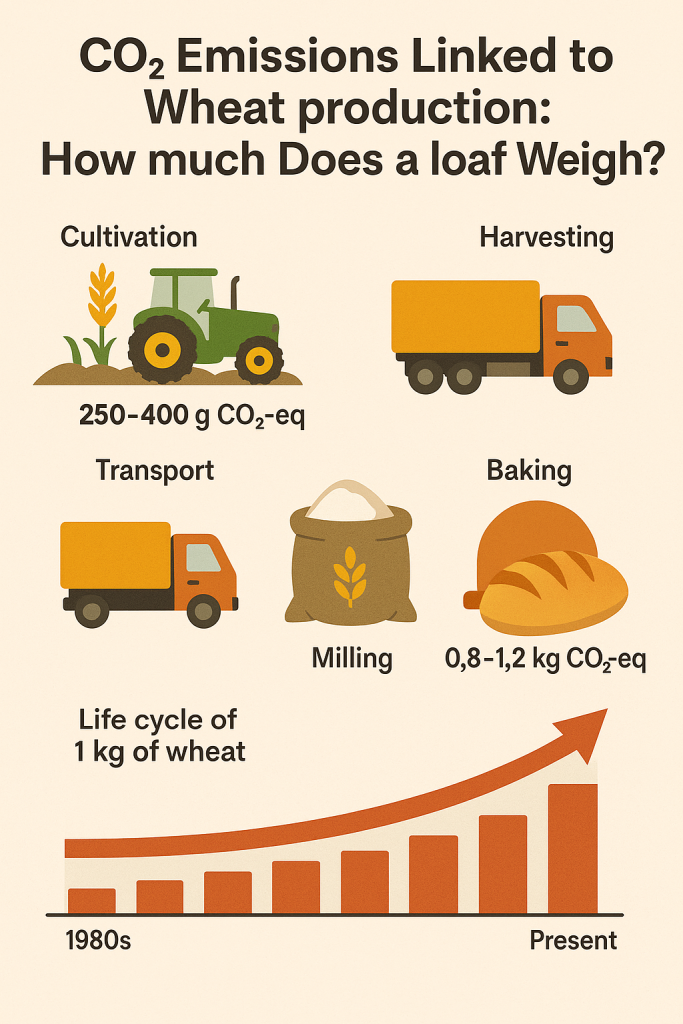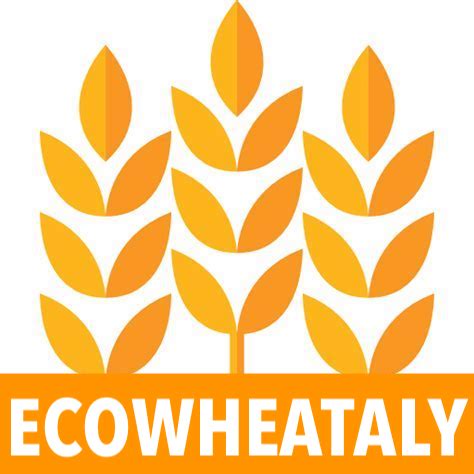When we bring home a loaf of bread, we rarely consider its environmental footprint. Yet behind every kilogram of wheat turned into flour and then into bread lies a well-defined carbon trail. Understanding the climate cost of what we eat is increasingly crucial in a world searching for solutions to the climate crisis.
Wheat’s Life Cycle: From Plowing to Baking
Life Cycle Assessment (LCA) is a powerful tool used to quantify greenhouse gas (GHG) emissions at each stage of agricultural production. For wheat, the chain begins in the field with cultivation, continues with harvesting and transportation, then processing into flour, and finally baking. Each of these phases carries its own carbon footprint, which adds up to define the full climate impact of one kilogram of bread.
According to recent studies conducted in Europe, the GHG emissions associated with producing 1 kg of soft wheat range from 250 to 400 grams of CO₂ equivalent. These values vary greatly depending on farming practices, fertilizer use, fossil fuel consumption, and irrigation.
Including the entire supply chain up to the final product, a loaf of bread can emit between 0.8 and 1.2 kg of CO₂ equivalent, mainly due to energy consumption during milling, baking, and transportation to urban centers.
What Are the Main Contributors?
The most significant contributors to wheat’s carbon footprint are:
- Nitrogen fertilizers: Their production is highly energy-intensive, and their use emits nitrous oxide (N₂O), a greenhouse gas far more potent than CO₂.
- Soil tillage: Deep plowing releases carbon stored in the soil and burns diesel fuel.
- Irrigation: In areas where it is necessary, water pumping requires energy, often from fossil sources.
- Milling and baking: Industrial flour mills and ovens can be emission-intensive if not powered by renewables.
Organic vs Conventional Wheat
Is organic wheat less polluting? The answer is nuanced. Organic farming generally uses fewer industrial inputs, such as synthetic fertilizers, but it often yields less. Therefore, on a per-kilogram basis, its carbon footprint can be similar or even higher—unless other variables are optimized.
However, in a long-term sustainability perspective, organic systems can improve soil health and reduce local pollution, although their climate performance depends heavily on specific management strategies.
Towards a Low-Carbon Loaf
There are already promising supply chains focused on reducing bread’s climate impact through:
- Conservation agriculture (reduced soil disturbance)
- Smart crop rotation
- Use of compost and organic amendments
- Renewable energy for milling and baking
- Shorter supply chains that reduce transportation emissions
Consumers also have a role to play. Choosing locally-produced bread made from sustainably grown wheat can significantly reduce the environmental footprint of our daily food.

Sources:
- EC Joint Research Centre (2023), Environmental Footprint Category Rules for Bread and Wheat. https://ec.europa.eu/jrc/en/publication/efcr-bread
- FAO (2014), Agriculture, Forestry and Other Land Use Emissions by Sources and Removals by Sinks. https://www.fao.org/3/i6340e/i6340e.pdf
- IPCC AR6 Synthesis Report (2023), Summary for Policymakers. https://www.ipcc.ch/report/ar6/syr/
- Poore & Nemecek (2018), Reducing food’s environmental impacts through producers and consumers. Science, 360(6392), 987–992. https://doi.org/10.1126/science.aaq0216
- Ecoinvent database v3.9.1 – Data on LCA in wheat production.

